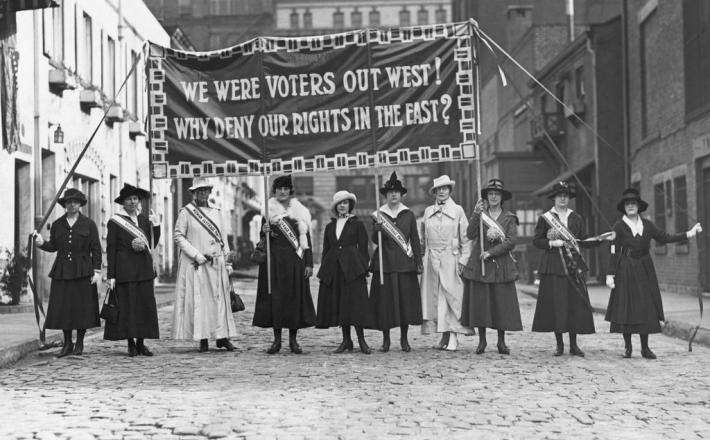How to celebrate a complicated win for women
Source: The New York Times
There’s a historical haze confounding plans to observe the coming 100th anniversary of the ratification of the 19th Amendment in 1920.
It descends, first, in definitions: “That’s the one that guaranteed a right to vote to all American women, right?” Not exactly. The “women’s suffrage” amendment, like the 15th Amendment before it, which sought to protect the political rights of former slaves, guaranteed nothing. It simply told states that being female could no longer be a reason to bar citizens from voting. To African-American women living in states with systems in place to block African-American men from voting, the amendment provided neither clarity nor power.
Haze also makes it difficult to see what merits celebration. With the most prominent advocates of women’s voting rights having come under scrutiny for their racial exclusiveness, including Elizabeth Cady Stanton and Alice Paul, can we honor their activism? Can we celebrate a transformation that broke men’s monopoly on political power while we simultaneously face up to ways that the ugliest aspects of American history influenced how citizens achieved this victory and how they behaved afterward? That is possible if we tell a documented story and use appropriate lenses.
Click here to read the full article published by The New York Times on 27 August 2018.

There’s a historical haze confounding plans to observe the coming 100th anniversary of the ratification of the 19th Amendment in 1920.
It descends, first, in definitions: “That’s the one that guaranteed a right to vote to all American women, right?” Not exactly. The “women’s suffrage” amendment, like the 15th Amendment before it, which sought to protect the political rights of former slaves, guaranteed nothing. It simply told states that being female could no longer be a reason to bar citizens from voting. To African-American women living in states with systems in place to block African-American men from voting, the amendment provided neither clarity nor power.
Haze also makes it difficult to see what merits celebration. With the most prominent advocates of women’s voting rights having come under scrutiny for their racial exclusiveness, including Elizabeth Cady Stanton and Alice Paul, can we honor their activism? Can we celebrate a transformation that broke men’s monopoly on political power while we simultaneously face up to ways that the ugliest aspects of American history influenced how citizens achieved this victory and how they behaved afterward? That is possible if we tell a documented story and use appropriate lenses.
Click here to read the full article published by The New York Times on 27 August 2018.